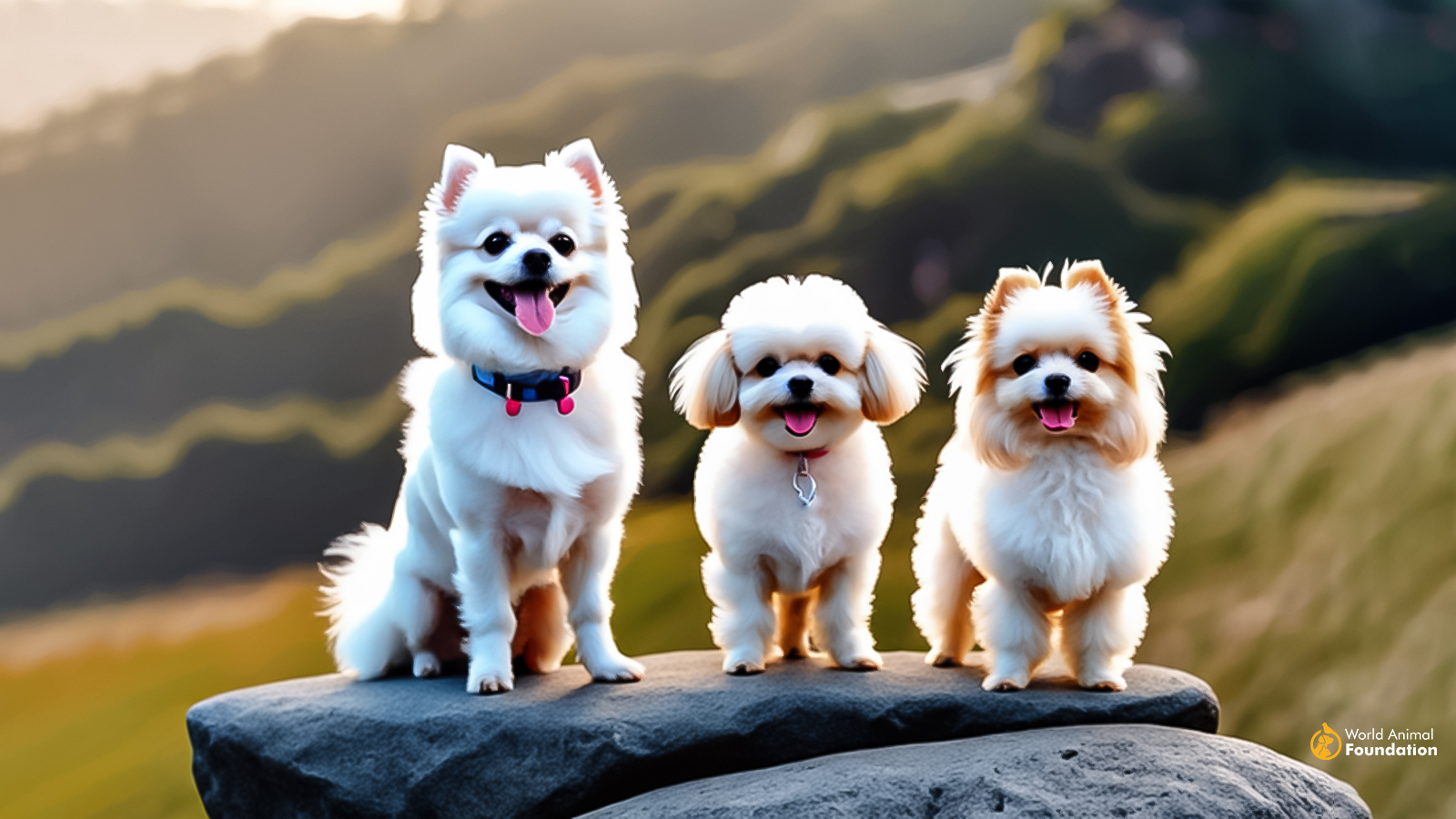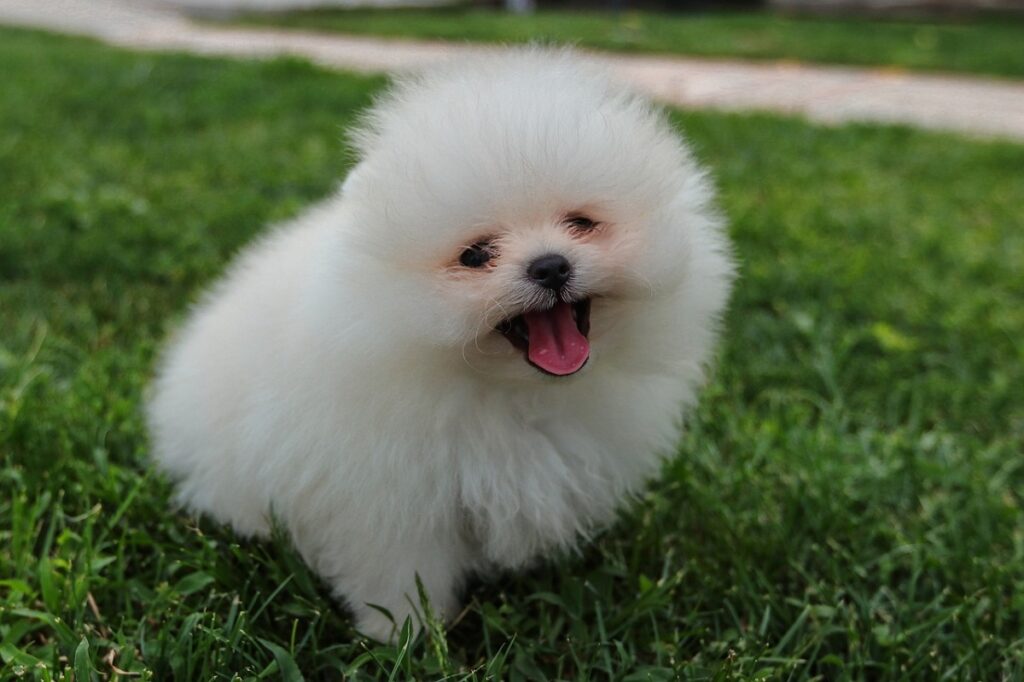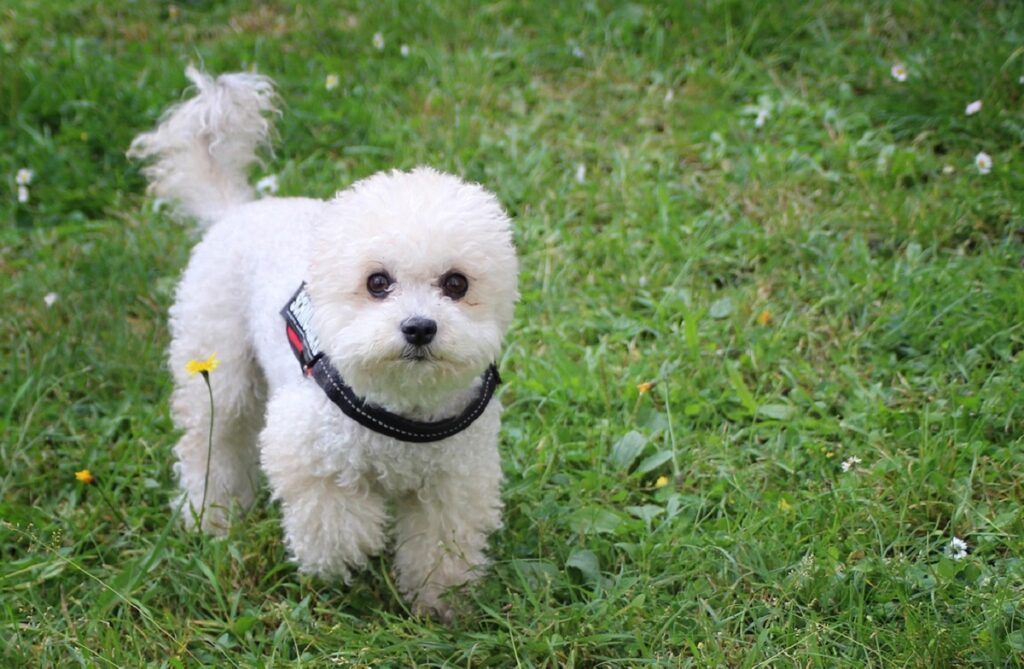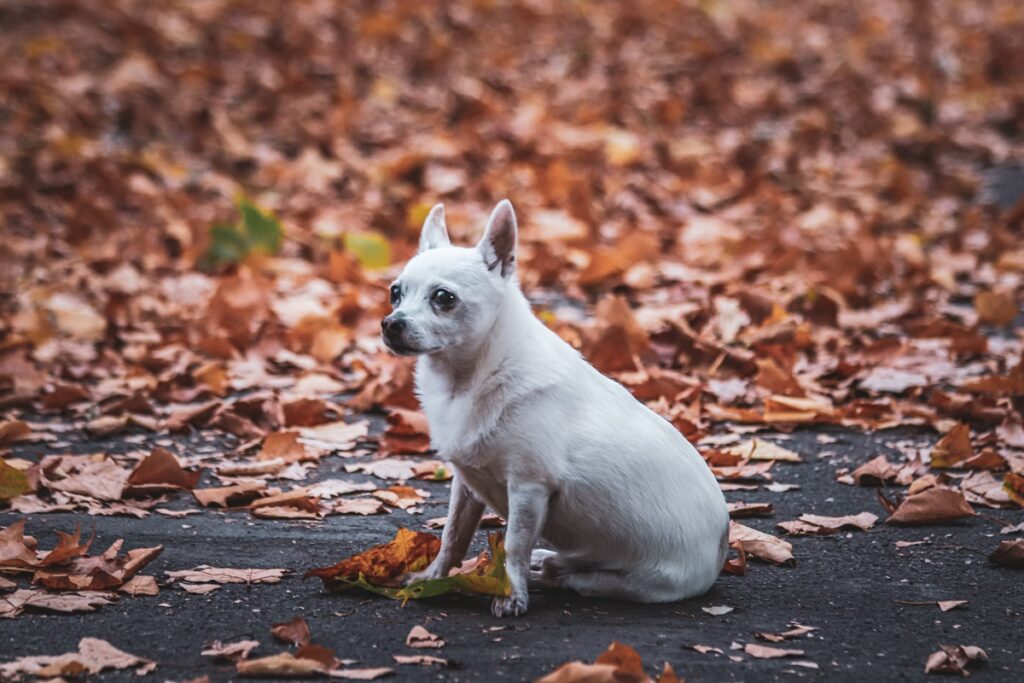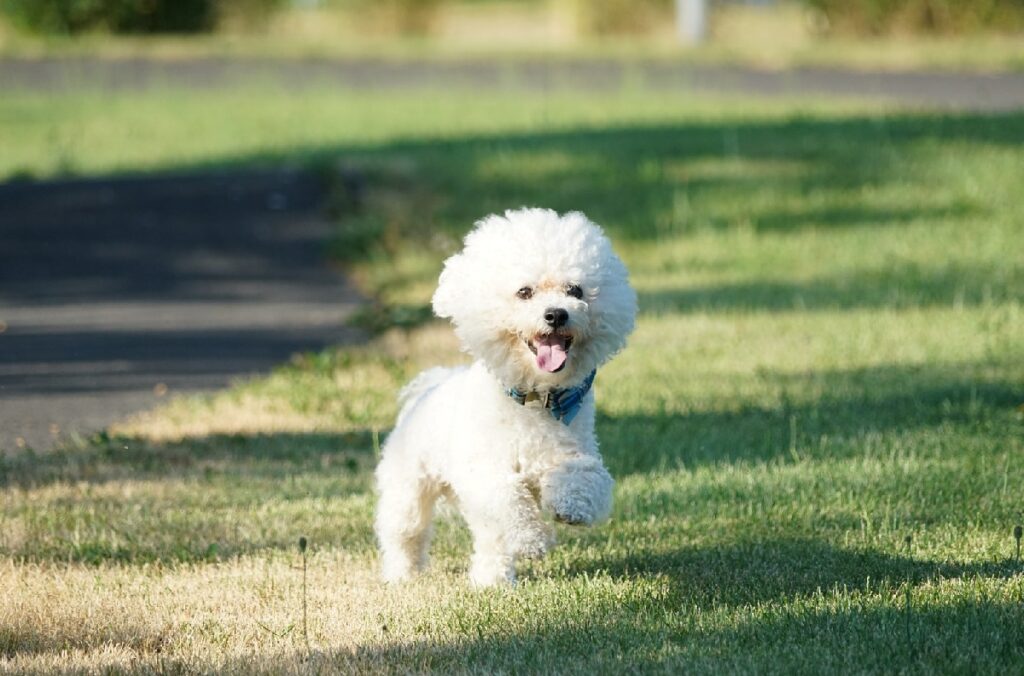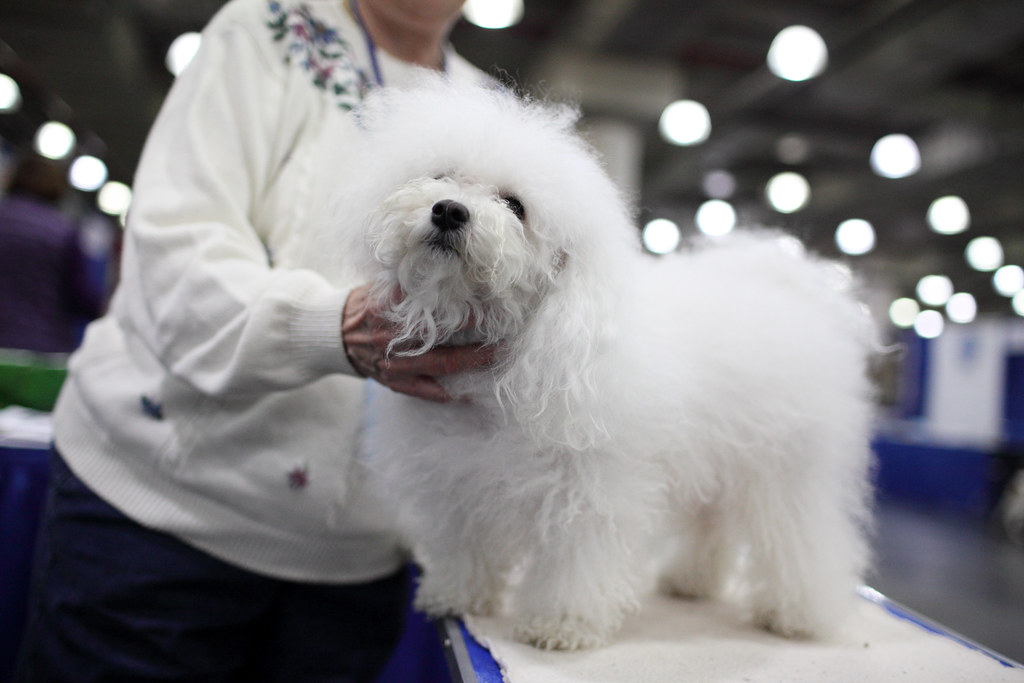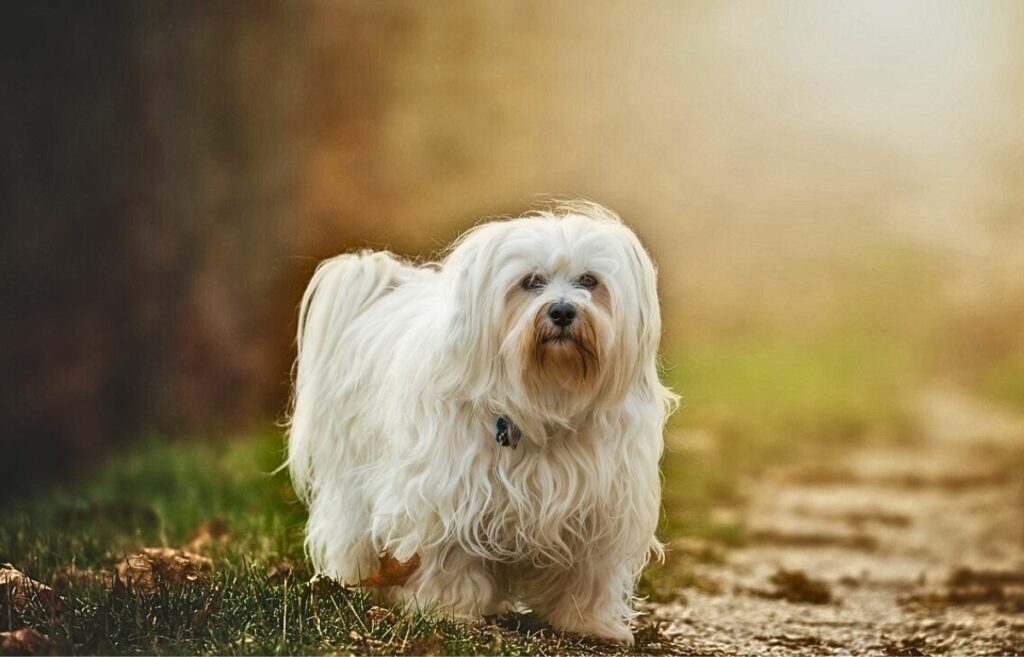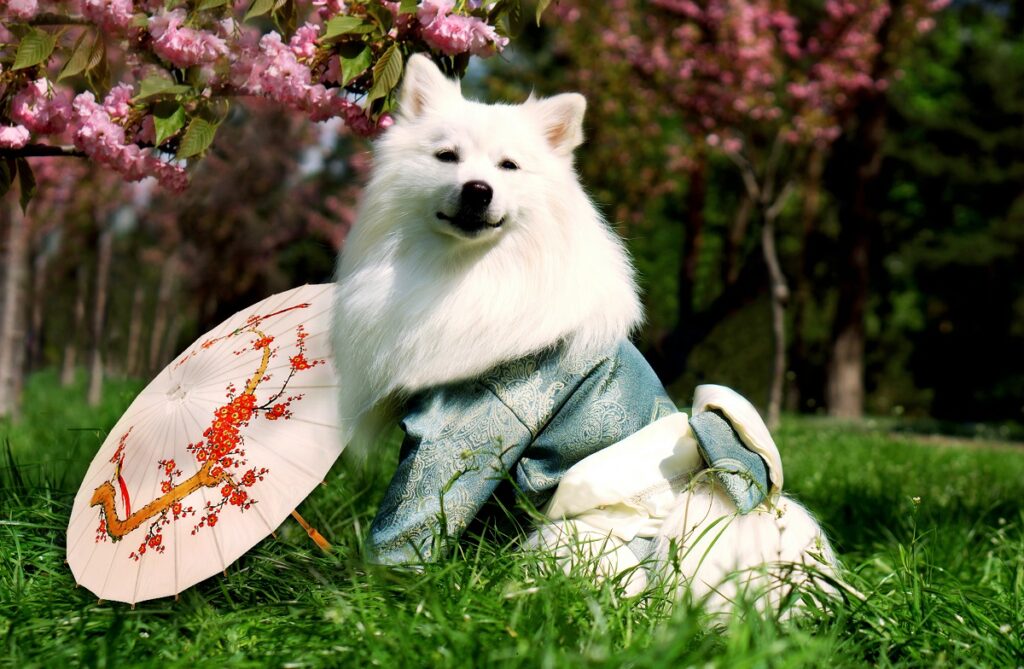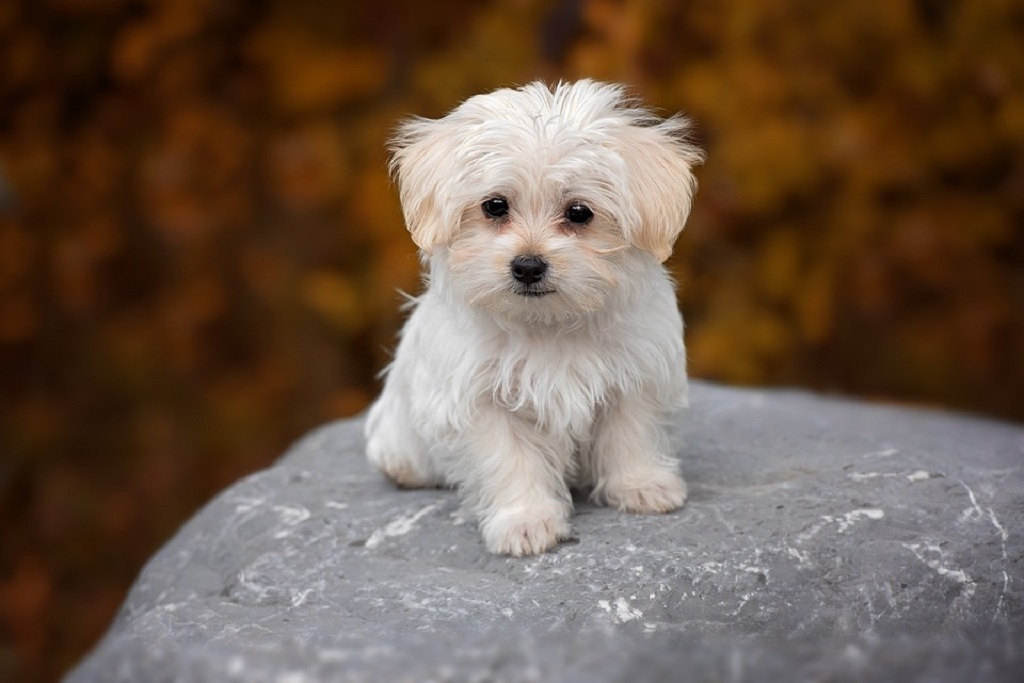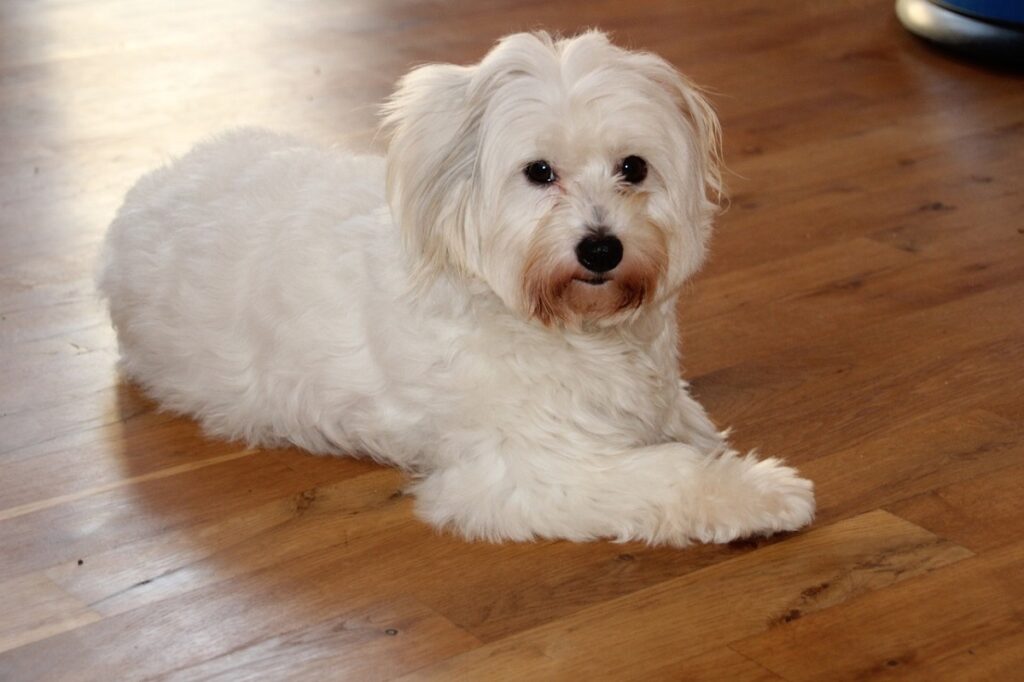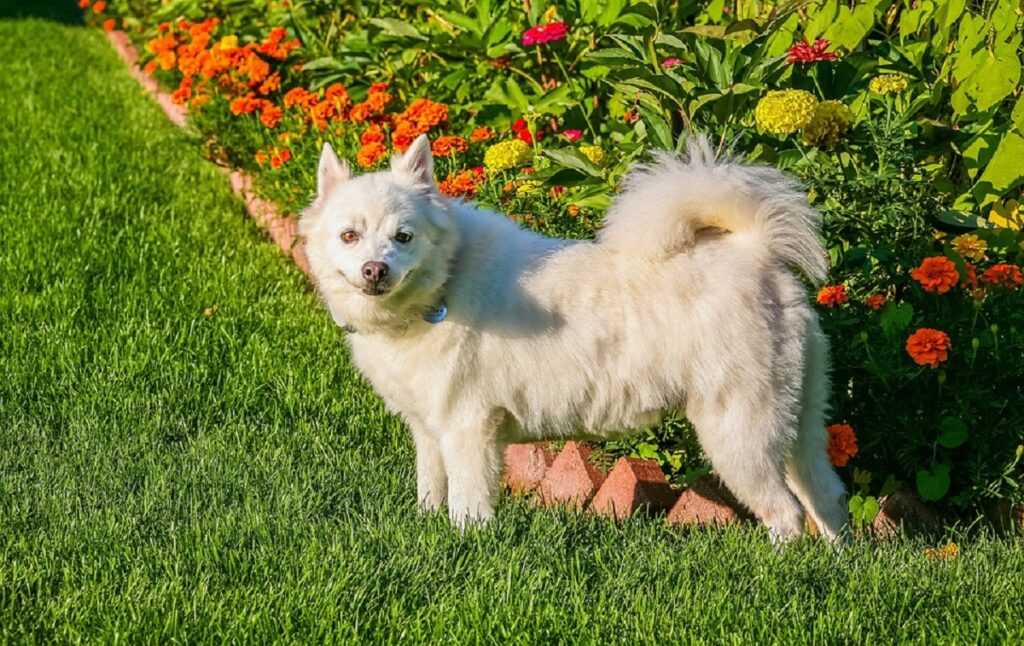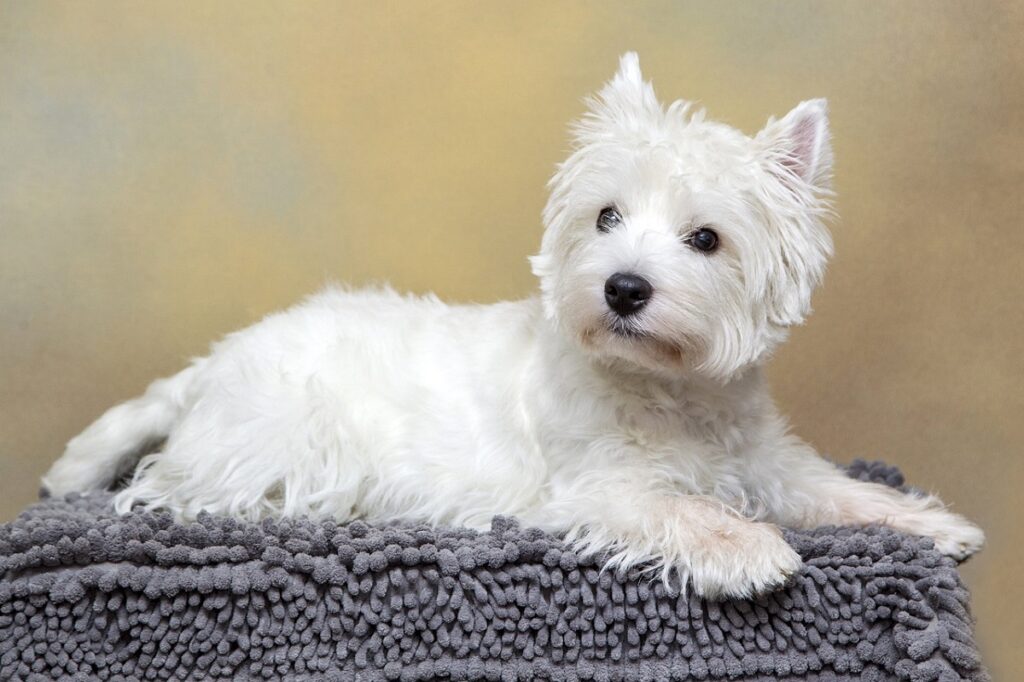Prepare for a cuteness overload! From fluffy clouds to sleek companions, this list of 12 small white dog breeds is guaranteed to steal your heart. These pint-sized pups pack a punch of personality, offering everything from playful energy to cuddly devotion. Whether you’re looking for a lively lap dog or a quiet, affectionate friend, discover the perfect snowy companion to brighten your life and add a touch of adorable fluff to your home. Get ready to say “aww!”
Name the cutest, furriest thing you can think of… If you said “small white dogs,” this article is perfect for you. The Pomeranian, the Havanese, and the Maltese are all adorable breeds that are as cute as baby bunnies.
They’re not only lap dogs but also intelligent and driven canines. If a German Shepherd or a Dobie is just a bigger dog than you think you could handle, these dogs are the perfect size to add to your heart and home.
We’ll talk about how to care for these little gems and where they originated. Then, take a hint from Starbucks the next time you’re in a shelter or at a breeders and say, “I’d like a short, please.”
Small white dogs are lively and affectionate and just the perfect size to be your sidekick. Just be sure to train and socialize them so they don’t give you any lip.
Small White Dog Breeds
More than 12,000 years ago, small dogs originated in the Middle East. The domestication of the smallest wolf, the Middle Eastern grey wolf, probably led to the development of all small dogs. It has been discovered that a gene, the IGF1 gene, determines the size of dogs.
Ancient dog remains found 13,000-31,000 years ago suggest that large dogs like the Great Dane came long before small dogs.
The Chihuahua is widely known to be the smallest dog breed in the world. Miracle Millie was the smallest dog of all time, weighing in at a whole 1 pound and reaching 3.8 inches tall.
Small dogs tend to be easier to care for with:
- Feeding
- Vet visits
- Mobility/Traveling
- Grooming
- Lifestyles (Apartment living)
Now, let’s get into small, white, and quite adorable dog breeds.
1. Pomeranian
| Group | Toy |
| Height | 6”-7” |
| Weight | 3-7 lbs. |
| Coat and Color | Double coat – Outer and under. According to the American Kennel Club (AKC), there are 23 Pomeranian colors besides white. |
| Life expectancy | 12-16 yrs. |
These cute little dogs are active and outgoing and love to play. The Pomeranian originated in Europe and was named after an area called Pomerania, which is in today’s Poland and Germany. Their lineage goes back to Spitz (sled-pulling) dogs, which they mimic with their thick coats, pointy ears, and curled tails.
In 1892, Poms came to the US, which makes them one of the oldest breeds recognized by the AKC in 1888.
2. Miniature Poodle
| Group | Non-sporting |
| Height | 10”-15” |
| Weight | 10-15 lbs. |
| Coat and Color | Single coated – Dense, dense, wavy/curly; 26 miniature poodle colors besides white |
| Life expectancy | 10-18 yrs. |
Miniature poodles (different from toy poodles) are an intelligent, energetic, and social dog breed. They love to hike, swim, and go on long walks, so their people must be active to keep these dogs busy. Interactive puzzles are a good way to keep them mentally sharp. They excel at:
- Learning tricks
- Retrieving
- Agility courses
- Obedience training
Their fur can be okay for some people with allergies, but no dog is completely hypoallergenic. These active dogs enjoy being around their guardians, so it wouldn’t be good for people who can’t be with them frequently.
3. Chihuahua
| Group | Toy |
| Height | 5”-8” |
| Weight | Do not exceed 6 lbs. |
| Coat and Color | Both, some have single, some have double; 2 varieties – Smooth coat (short-haired) and long-haired; 29 Chihuahua colors besides white; Longhaired outer coat – Silky. |
| Life expectancy | 14-16 yrs. |
Chihuahuas are truly misunderstood. I had one named Braveheart, and she was smart, loving, and interacted well with the other animals (including a cat) and even my young child. They were best friends. (But always supervise children and Chihuahuas.) Yes, she was a barker, and they’re known to be. But I would be, too, at that size.
This small white dog breed originated in Mexico and is named after their state, Chihuahua, which is the largest state in Mexico by area. Ironic, no? This Mexican dog breed was officially recognized by the AKC in 1904, but the Chihuahua’s history is thought to be quite ancient, going back to the 9th century.
4. Bichon Frise
| Group | Non-Sporting |
| Height | 9.5”-11.5” |
| Weight | 12-18 lbs. |
| Coat and Color | Double coat, generally nonshedding – Silky, curly outer coat; Soft undercoat – White, White & Apricot, White & Buff, White & Cream |
| Life expectancy | 14-15 yrs |
Talk about a little snuggle-pup. This small white dog breed’s lineage goes back to the 13th century in the Canary Islands. After being toted around Europe as pampered lapdogs, they fell out of the aristocratic lifestyle during the French Revolution.
The little fluffballs became popular again, doing tricks at circuses, and eventually, the French and the Belgians cheered them on to preserve the breed and set the standard.
Don’t be the dog parent who doesn’t train a tiny dog like this because “how much trouble could she cause?” A lot (barking, digging, biting), so early socialization and positive reinforcement training are necessary.
5. Bolognese
| Group | Foundation stock service |
| Height | 10”-12” |
| Weight | 6-10 lbs. |
| Coat and Color | Single coated – Long, fine, wavy; Only white in color |
| Life expectancy | 12-14 yrs. |
These rather chill dogs are more serious and calm, with low to medium energy. The Bolognese (pronounced Bow-la-nay-z) originated in Bologna, Italy, centuries ago and are members of the Bichon family. The aristocrats cherished them during the Renaissance.
Bolognese dogs deeply love their family but might take a while to accept unknown people. This dog would be perfect for retirees or seniors.
6. Havanese
| Group | Toy |
| Height | 8.5”-11.5” |
| Weight | 7-13 lbs. |
| Coat and Color | Double coated; Soft and straight/wavy outer coat – Soft undercoat; 24 Havanese colors besides white |
| Life expectancy | 14-16 yrs. |
Here are a few quick facts about Havanese dogs:
- Affectionate
- Intelligent
- Outgoing
- Friendly
- Good with kids
- Good with dogs
- Good with cats
- Playful
The Havanese, from Havana, Cuba, are so social they can feel separation anxiety if left alone for long periods of time. They’re meant to be, are bred to be, around people.
But remember, small dogs aren’t toys and need to be exercised as medium and large dogs do. Only not as far or as long, but daily. They’re part of the Bichon family of dogs, and their ancestors include the Bichon Frise and the Maltese.
7. Japanese Spitz
| Group | Foundation stock service |
| Height | 12”-15” |
| Weight | 10-25 lbs. |
| Coat and Color | Double coated; Long, profuse outer coat – Thick and plentiful undercoat – Only white in color |
| Life expectancy | 10-14 yrs. |
“[The Spitz is] any of a group of northern dogs—such as the Chow Chow, Pomeranian, and Samoyed—characterized by dense, long coats, erect pointed ears, and tails that curve over their backs.” – Britannica
This Japanese dog breed was introduced to the UK and Ireland as late as 1976, so it is relatively new. The Japanese Spitz breed was originally bred by American Eskimos and made their way to Japan later. These cheerful, loyal, affectionate dogs are great with kids and other animals in the home but can be suspicious of strangers. (They’ll need to be socialized early.)
They are quite intelligent and excel at agility and obedience, so frisbee throwing or hiking would be an excellent workout for them.
8. Maltese
| Group | Toy |
| Height | 7”-9” |
| Weight | Under 7 lbs. |
| Coat and Color | Single coated – Long, silky; White, White & Lemon, White & Tan |
| Life expectancy | 12-15 yrs. |
The Maltese dog has a silky straight coat that goes to the floor and is one thing audiences love about them in dog shows. They have energy, but a daily walk or a run around the yard would be just fine with them.
It’s believed this breed was introduced to Malta, an island in southern Europe, by the Phoenicians. These small white dogs were exhibited as the Maltese Lion Dog at New York’s first Westminster show in 1877. They’re no strangers to show business.
Affectionate, charming, and playful dogs, these little dogs are low-shedding and athletic on an agility course.
9. Coton de Tulear
| Group | Non-Sporting |
| Height | 9”-11” |
| Weight | 8-15 lbs. |
| Coat and Color | Single coated – Long, silky; White, black (rare) |
| Life expectancy | 15-19 yrs. |
These pups are named after the French word “Coton” which means cotton, and once you see them, you’ll see the resemblance. Whether you live in the city, the country, or in an apartment, these dogs are adaptable and would follow you anywhere.
The Coton de Tulear originated in the port city of Toliara in Madagascar. Ooh… fancy. That gorgeous coat needs regular grooming, and they’ll also need daily walks or to play games in the yard even though they’re not particularly high-energy.
10. Miniature American Eskimo Dog
| Group | Non-Sporting |
| Height | 9”-12” (toy)12”-15” (miniature)15”-19” (standard) |
| Weight | 6-10 lbs. (toy)10-20 lbs. (miniature)25-35 lbs. (standard) |
| Coat and Color | Double coated – Long outer coat; Short, dense undercoat – White, white & biscuit (cream) |
| Life expectancy | 13-15 yrs. |
Miniature American Eskimo dogs are friendly, although you’ll want to warm them up to new folks. But the highly trainable dogs are great with children. They’re also high-energy dogs and quick, so just letting them run around in the yard isn’t enough.
They’ll need long walks with interactive games to get that energy out and remain healthy physically and mentally.
Funny enough, Eskimos had nothing to do with the origin of the breed. According to the AKC, they were named after the name used by a Spitz breeding kennel in Ohio.
11. West Highland White Terrier
| Group | Terrier |
| Height | 10”-11” |
| Weight | 15-20 lbs. |
| Coat and Color | Double coated – Long, straight, hard outer coat; Soft undercoat |
| Life expectancy | 13 – 15 yrs. |
Smart and adorable, the West Highland terrier was bred to hunt rodents and will chase small animals with vigor. They’re adept at canine sports and activities like obedience, agility, and rally. They’re also independent since they’ve been bred to work alone but adore their families just the same.
Although their beginnings are a bit sketchy, the breed was first seen at Scottish dog shows in 1896. In 1906, they made their appearance at AKC shows. And you could call them famous since Juicy Couture and Black & White Scotch Whiskey have used them to sell their wares.
12. Cotonese
| Group | Mixed breed – Cross between a Coton de Tulear and a Maltese |
| Height | 8”-10” |
| Weight | 7-13 lbs. |
| Coat and Color | Single coated – Long, soft, dense, curly; White, cream |
| Life expectancy | 14-17 yrs. |
The first thing to remember is that the Cotonese isn’t purebred. That doesn’t make him any less cute (that fluffy white fur!) or lovable. Obviously, we won’t be talking history here since mixed breeds are, well, mixed breeds, but to determine the temperament of one, you’ll need to study all the breeds in the cross.
For instance, since this mixed breed is the product of a Coton de Tulear and a Maltese, you could have a dog with some characteristics of one and/or the other breed. Not all hybrid dogs that are bred are half and half of each, so it also depends on the ancestry of each parent breed.
Key Considerations for Owning a Small White Dog
When delving into the world of small white dogs, it’s important to note that while we’ve compiled a comprehensive list, there are many small breeds worth discovering, like a miniature bull terrier, french bulldogs, parson russell terrier, jack Russell terriers, sealyham terrier, and several other dogs.
Here are some guidelines for taking care of your gorgeous white buddies:
Grooming
Most, if not all, of the dogs on our list need steady grooming – as in every 4-6 weeks plus daily brushing. Fur matting can be a real problem and even begin to cause pain to your dog.
Socialization
These dogs won’t just naturally be able to be around your cat, your dog, or any other pets you have. It takes early socialization when they’re young, to get them accustomed to other animals and people.
An exceptional place to take them is PetSmart, where they have trained associates to answer your questions and people who will “Ooh” and “Aah” over your dog.
Also, carry them to the dog park just for the smells and so tame dogs can come up and get nose-to-nose with them. You don’t necessarily need to put them on the ground, although some parks do have areas for smaller dogs.
Training
Don’t forget just because your dog is small doesn’t mean they don’t need to be trained. Who wants to go to someone’s house and see a dog who’s tearing through the house, zooming over your lap, or nipping at your heels while you’re trying to visit? (I know I don’t.)
Early training will do the nipping – in the bud – so you can be confident that visitors or family members who visit will enjoy it.
Exercise
Sometimes people think, ‘Why would he need to exercise? He’s so small.’ But all dogs need some exercise, small dogs included. Whether it’s a walk, throwing the frisbee around, a swim (poodles!), or a romp in the backyard, these are beneficial for your dog’s state of mind and health.
Vet visits
In general, twice-a-year visits to your vet are recommended, and if there’s ever a bigger issue, of course, take them in as well. It’s also the perfect place to ask training questions, get their nails trimmed, get directions on how to clean their ears and brush their teeth, and get their nails trimmed.
Your vet should appreciate you’re making such an effort to ensure your small dog has the best life possible.
FAQs
Why Do White Dogs Get Brown Around the Eyes?
According to the Chief Veterinary Officer for the AKC, porphyrins (chemicals) are excreted from tears, saliva, urine, and feces in dogs and are high in iron, which is the ingredient that especially stains the fur of small white dog breeds.
All dogs have porphyrin in their tears, but some have more than others. Porphyrin staining can be normal or a health concern like:
- Glaucoma
- Conjunctivitis
- Eye infections
- Ear infections
- Ingrown eyelashes
- Allergies
So, see your vet to make sure all is well if you notice discoloration around the eyes.
How Can You Effectively Clean the Eyes of White Dogs?
Use dry shampoo or 3% hydrogen peroxide or dog wipes (ask your vet) and a wet washcloth using lukewarm water to wash around the eyes. Afterward, comb and dry thoroughly with a towel or a blow dryer set on cool. (This also gets them accustomed to being blow-dried.)
Why Does the Fur of My White Dog Change to a Pink or Brownish Color?
“Porphyrin is the most common reason for pink, red, orange, or brown stains on your dog’s fur.” AKC
Wrap-up
So, if small white dog breeds are on your Christmas/Chanukah list this year, we agree wholeheartedly that Santa needs to run to the rescue, literally and figuratively speaking. These dogs are devoted and loving and don’t need a lot of space.
The question is, why can’t teenagers be more like this?
These twelve small white dog breeds offer a delightful variety of personalities and needs, proving that “adorable” comes in many furry packages. Whether you’re drawn to the fluffy charm of a Bichon Frise, the playful energy of a West Highland White Terrier, or the regal elegance of a Maltese, there’s a perfect pint-sized companion waiting to steal your heart. Remember to research each breed thoroughly to ensure a happy and fulfilling life together, and be prepared for a lifetime of cuddles and canine companionship.

